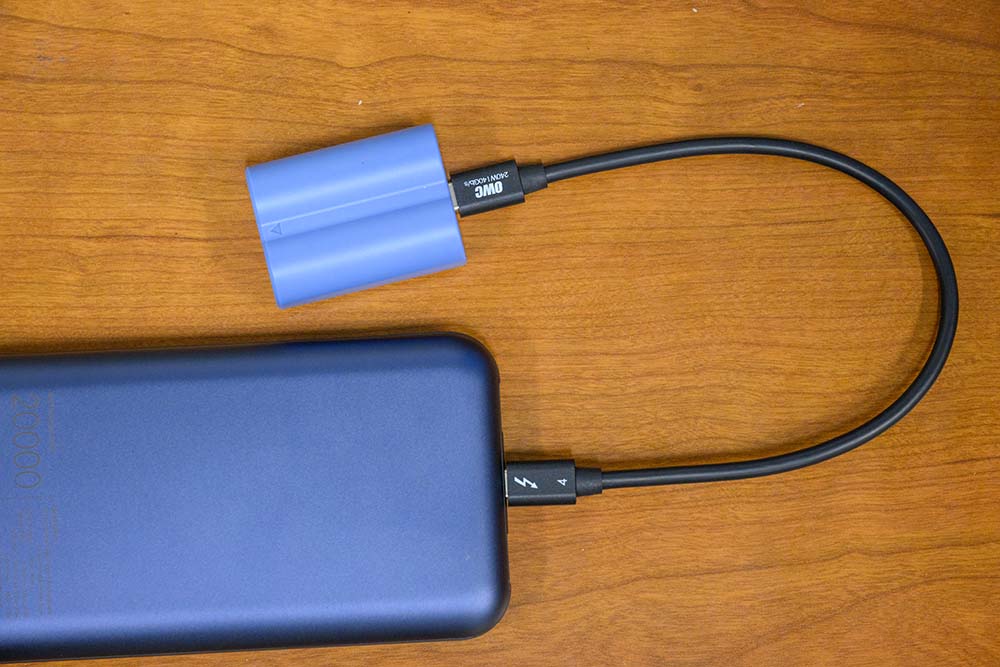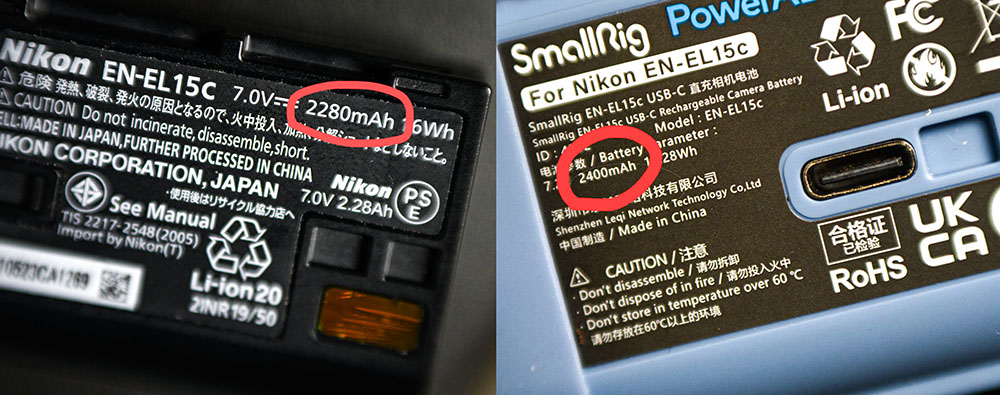UPAA Blog 2023-24 #11 1/25/24 (text and photos by Matt Cashore)
"Thingamajig Thursday" is an occasional series of articles on inexpensive (under $300) gadgets that can make the day-to-day of our jobs a little more convenient.
Many years ago I brought the wrong charger on an international trip. Uh Oh. I managed, and haven’t made that mistake again (so far)... but I definitely welcomed USB-C in-camera charging as an extra layer of insurance against such self-induced disaster. In a pinch, all that’s needed is an easy-to-find-anywhere USB-C cord.
That said, though, I don’t care for in-camera charging as the primary charging option. A few reasons: A) I need to use the camera as a camera, not as a charger. B) I can only charge one battery at a time in-camera. C) I don’t think the USB-C port on the side of the camera is really made for the wear-and-tear of repeatedly using it as a charger.
What if we could have the convenience of in-camera charging…out of the camera??
Well, now we do with USB-C ports built directly into the batteries.
First it was rechargeable AA bateries, and more recently aftermarket batteries for Nikon, Canon, Sony and Fuji have USB-C charging. Here are two sources: Promaster, and another from well-known camera accessory maker Smallrig.
I bought two EN-EL15c batteries from Smallrig.
The Smallrig batteries come with a USB-A to USB-C cord, and are a unique blue color to easily distinguish them from OEM (Original Equipment Manufacturer) batteries.
Pros:
-Charge a spare battery while using the camera.
-Three options for charging—in camera, dedicated charger or directly by USB. In my usage, USB direct charging was fastest. (Your mileage will vary on this of course depending on the charging amperage (…or is it voltage? Can never remember that…)
-You have as many chargers as you have USB-C cords.

-I’ve used these in my D850, Z6II, Z7II and Z8. They perform exactly as an OEM battery does.
-Cheaper than OEM Batteries and even more so when they're on sale. (I was able to get them for roughly $35ea. during the holiday sales.)
-Higher capacity than OEM batteries:

Cons:
-Not 100% compatibility. Smallrig’s Q&A indicates these don’t work with the new Nikon Zf, for example.
-“What-if?” What if future firmware updates make aftermarket batteries incompatible? What if these don’t last as many recharge cycles as OEM batteries? What if using aftermarket batteries voids a warranty? Time will tell. These batteries are cheap enough and initial performance is good enough that I’ll take that risk.
Bottom line:
In 3 months use I've had no issues. I like ‘em a lot. So much, in fact, that I took advantage of a Black Friday promo and got three more for my Nikons and one for my Fuji GFX-100s.
"The batteries in my flashlight ran out. I wasn't sad, though...I was de-lighted!" Thanks for reading the blog. We'd love submissions and suggestions for a Thingamajig Thursday article...or anything. Email editor Matt Cashore, mcashore@nd.edu. And for daily doses of what your colleagues are up to, follow UPAA on Instagram!